Ashley McDonnell writes about swapping her hectic corporate workdays for a two-week trek to Everest Base Camp and how the mental challenges far outweighed the physical.
It's been three weeks since returning home after a 14-day round trip from Kathmandu, Nepal, to Everest Base Camp, and I can still hardly believe that my legs carried me to 5,364 metres (17,598 ft), over 130 km through the toughest living conditions I’ve ever experienced.
From sleeping in a room without heating, lighting or electricity in almost minus 20 degrees while fully clothed - wearing a hat, gloves and being wrapped in a sleeping bag to having my first (and last) yak cheese pizza on the descent from Everest Base Camp, the experience was one that awakened all of my senses and pushed me to my physical, mental and emotional limits.
My day-to-day in Paris could not be further from the two weeks of trekking. As Global Digital Acceleration Director across fashion and beauty for luxury group PUIG, working with luxury brands like Paco Rabanne, Jean Paul Gaultier and Charlotte Tilbury, I could be in two or three different countries in a week for work.
With years of travel and work like this, more often than not, little time remained for wellbeing and exercise. I was also longing for a break from my hectic schedule, and an adventure. A close friend, my partner and I decided on Nepal, and some initial research led us to believe that with seven months of training, we would be ready to embark on a 14-day trek with Intrepid to reach Everest Base Camp.
The physical training had to be intense: one or two runs a week, strength training and working with a nutritionist and coach online who completely changed my diet and gave me a rigorous plan to follow.
I trained from everywhere I travelled - squeezing in 30 minute gym sessions or runs where ever I landed, from Dublin to Istanbul and Athens, Paris to London and Abu Dhabi. I was running 20-30km per week and completing three weights sessions.
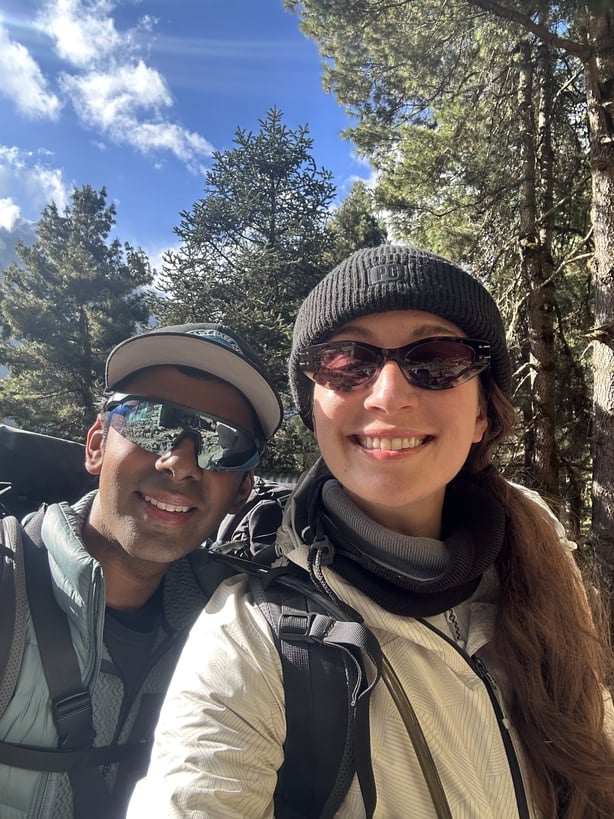
Somehow, after years of believing I could not prioritise exercise, I was able to make progress. I turned 30 in October and realised this was the most active I’d ever been in my life.
The day finally arrived to fly to Kathmandu and I was feeling excited, incredibly fortunate to be able to take the time off work to embark on such an adventure, and also apprehensive; I had no idea how my body would react to the altitude or if I actually had the fitness levels or mental strength to enjoy such an intense trek.
The day before departing Kathmandu, we had a meeting with our guide from Intrepid and the other people in our nine-person group. We set off at 2am to drive 130km, which could take four hours given the basic infrastructure across mountainous Nepal.
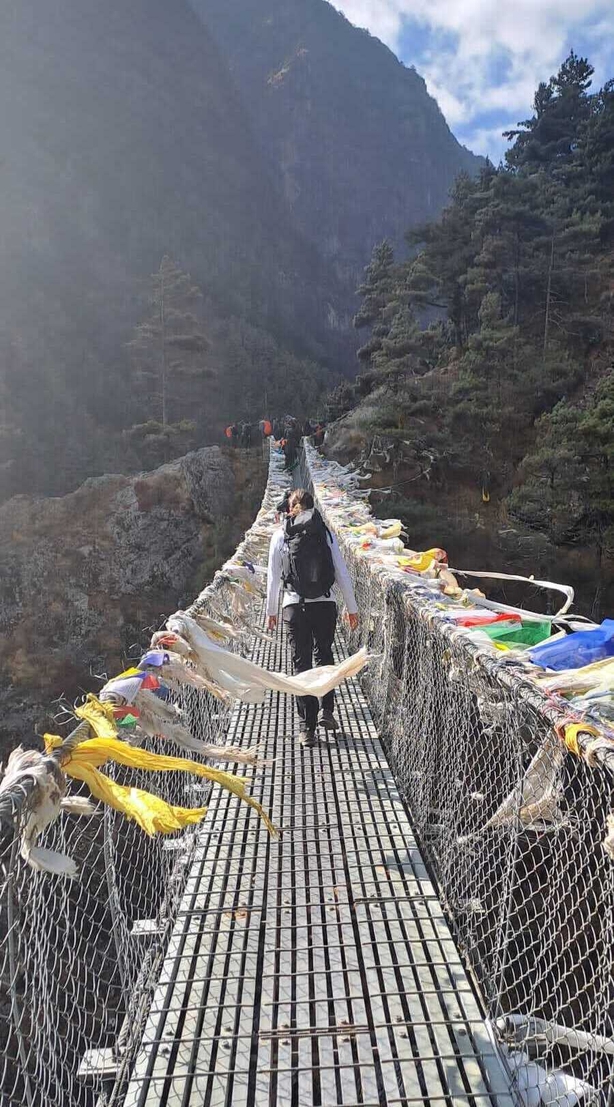
Next was a trip on a small fixed-wing plane to Lukla airport, a 15-minute flight that’s notorious for being one of the most dangerous routes in the world, due to the weather conditions in the Himalayas and the fact that the landing strip is uphill, perched on the mountain at an 11.7% slant and only 400m long. For context, Dublin Airport’s runway is 3,100m.
Luckily, the flight went well. The views were incredible and being surrounded by cargo (mainly toilet paper and cans) on the tiny plane quickly indicated that from here on in, comfort would be replaced with necessity.
Despite the lack of sleep, we departed Lukla with our guide, as well as the two assistant guides and five porters who joined us there. The entire crew from Intrepid consisted of local Nepali people who were experts on the region and had been completing the trek to Everest Base Camp for many years.
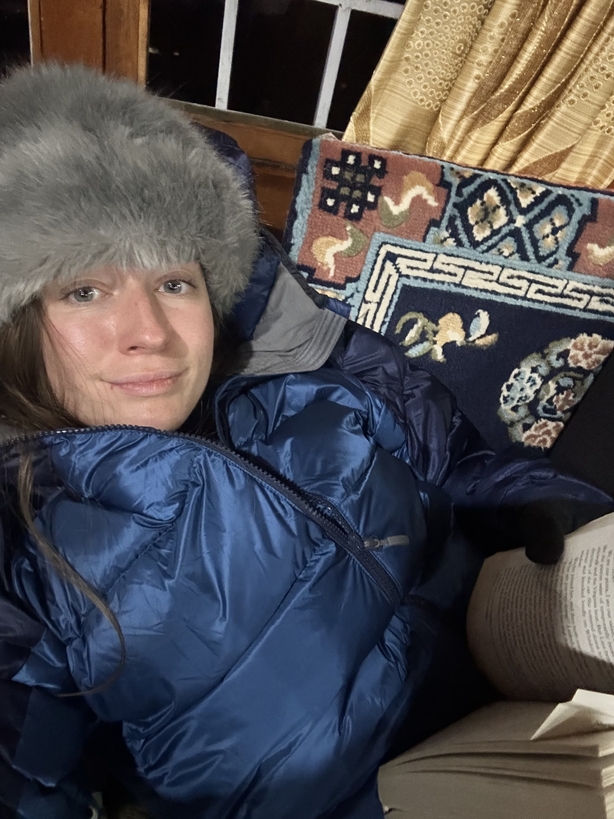
From this point on, we didn't have access to most basic amenities until returning to Kathmandu two weeks later: roads, cars, hot running water, electricity plugs, fresh fruit or vegetables. We often didn’t have flushing toilets, and showers were rarely available.
Surprisingly, I found that the trek itself was completely manageable in terms of the physical challenge. Whenever we had difficult terrain - whether due to rocks, ice, a steep climb or trails being crowded with yaks, donkeys or horses - we took things slowly and had plenty of breaks.
While ascending, altitude sickness is the biggest threat to your body, and moving at a steady pace is key to avoiding headaches, nausea, dizziness or feeling completely exhausted. Each morning and evening we checked our oxygen levels and tried to drink at least three litres of water a day.

The whole group committed to not buying bottled water, so we refilled our own bottles in the tea houses and added chlorine tablets to purification tablets, which tasted like drinking from a swimming pool but meant we steered clear of any bacterial issues or adding to plastic pollution on the mountain.
We also each collected a kilogram of waste on our descent, bringing it to a lower part of the mountain so it could be correctly disposed of.
Most mornings started early, packing our bags and having a light breakfast at 7am and departing with our day bags by 8am. It would take us around seven hours to reach the next tea house, stopping during the day to have breaks as well as lunch, which mainly consisted of potatoes or eggs - very little can grow at such high altitudes so food options were limited and repetitive.
The physical exertion combined with the living conditions and impacts of altitude meant the experience was by no means an easy feat, but each day while outside and trekking across the Khumbu Valley, I couldn’t help but feel joy. The breathtaking views, the constant reminders of how, even while living in very simple conditions, it's our mindset and the people around us that make us happy.
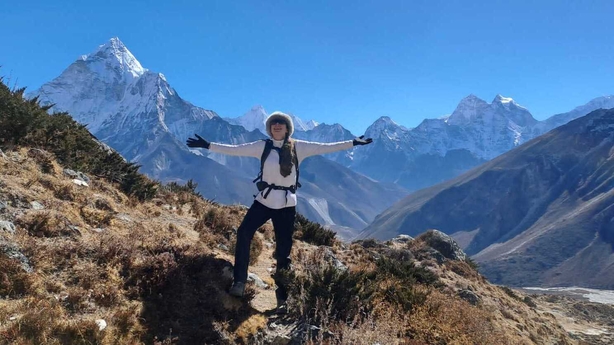
Looking back, the most challenging part of the trek was not having access to basic hygiene amenities. Without running water, the toilet situation was less than appealing, requiring a bucket and large pail of water. Showers, when available, were for an additional fee and consisted of garden hoses pulled through open windows: meaning you often finished a shower feeling even colder than you were before.
We reached Everest Base Camp on day eight, one of the toughest days of the entire trek as I really felt the impact of the altitude on my breathing. At this point, food options had also drastically dwindled, with my final meal to fuel me consisting of Pot Noodles and Pringles.
The moment we reached Everest Base Camp felt like finishing a very long and challenging race that had no end in sight, however, the race wasn’t quite over!
Emerging from the rubble of the glacier that leads to Everest Base Camp, I took in the incredible views of frozen water, the famous Khumbu Icefall - which has claimed over 40 lives since 1950 - and the large slab of rock with 5374m painted on it, indicating we had reached our destination.
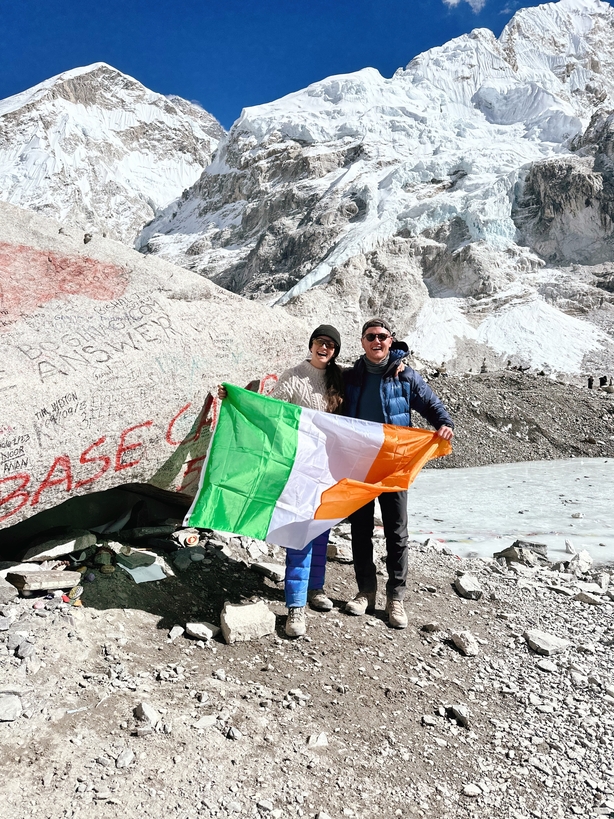
For many, the adventure ends at this point, availing of a helicopter back to Lukla or Kathmandu. Determined to complete our trek without any assistance, we needed to return to the nearest tea house in Gorak Shep, which was by far the most dilapidated place we stayed: the cold, damp building and unsavoury smells combined with the high altitude and questionable food meant very little sleep or recovery.
The trek back to Lukla from Everest Base Camp took another four days, covering up to 20km a day on our descent, with each day bringing a greater sense of relief that the hardest parts were over.
Although, physically, I felt prepared for the trek to Everest Base Camp, I underestimated the mental challenges; the impact of the freezing temperatures in the early morning and night, and the lack of comfort while sleeping in places without heat or even electricity.
Nothing can really prepare you for the environment if you haven’t experienced it previously, and the weather conditions can also change rapidly throughout each day.
Personally, this was a once in a lifetime experience as I can’t see myself facing Everest Base Camp for a second time, but I’ve returned feeling energised, slightly in shock that I managed to make it there and back, and ready for a new challenge.
The views expressed here are those of the author and do not represent or reflect the views of RTÉ.

